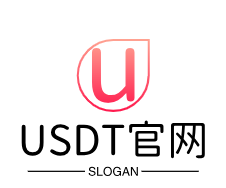
Real-world cryptocurrencies are digital assets that use encryption techniques to secure
financial transactions and control the creation of new units. These currencies
are decentralized, meaning they operate independently of central authorities or
banks. Here is an overview of what real-world cryptocurrencies are like:
1. Bitcoin: Bitcoin is the first and most well-known cryptocurrency. It was created in 2009 by a person or group of people using the pseudonym Satoshi Nakamoto. The currency operates on a decentralized blockchain network, which allows for secure and transparent transactions without the need for intermediaries such as banks. Transactions are verified through a process called mining, which involves solving complex mathematical equations to validate new blocks of transactions. Bitcoin can be used for peer-to-peer payments, online purchases, and more.
2. Ethereum: Ethereum is a decentralized platform built on top of the Bitcoin blockchain. It allows developers to build and deploy decentralized applications (dApps) and smart contracts, which are self-executing contracts with the terms of the agreement between buyer and seller being directly written into lines of code. Ether is the native cryptocurrency of Ethereum, which is used to pay for transaction fees and computational services on the network.
3. Ripple: Ripple is a fast and low-cost cross-border payment system that uses blockchain technology to facilitate international money transfers. Instead of relying on traditional financial institutions, Ripple connects banks and payment providers through its xRP token, which acts as a bridge between different currencies and networks. Transactions on the Ripple network are settled in minutes rather than days, making it ideal for cross-border payments where speed is critical.
4. Litecoin: Litecoin is a fork of the Bitcoin blockchain that aims to improve upon its scalability and transaction speed. Like Bitcoin, Litecoin uses blockchain technology to enable secure and anonymous transactions, but it has a faster block time and can handle more transactions per second than Bitcoin. Litecoin's native cryptocurrency is LTC.
5. Cardano: Cardano is a decentralized public blockchain and cryptocurrency project that aims to provide a more secure and scalable platform for decentralized applications. It uses a proof-of-stake consensus algorithm instead of the energy-intensive proof-of-work algorithm used by Bitcoin and Ethereum. Cardano also includes a governance system that allows stakeholders to vote on proposals related to the development and management of the network.
In summary, real-world cryptocurrencies offer a range of benefits over traditional
payment methods, including increased security, transparency, and lower transaction
fees. However, they also come with risks, such as volatility, hacking, and lack of
regulation. As with any investment or financial decision, it's important to do your own
research and consult with a trusted financial advisor before investing in any
cryptocurrency or digital asset.


 发布于 2024-11-02
发布于 2024-11-02
